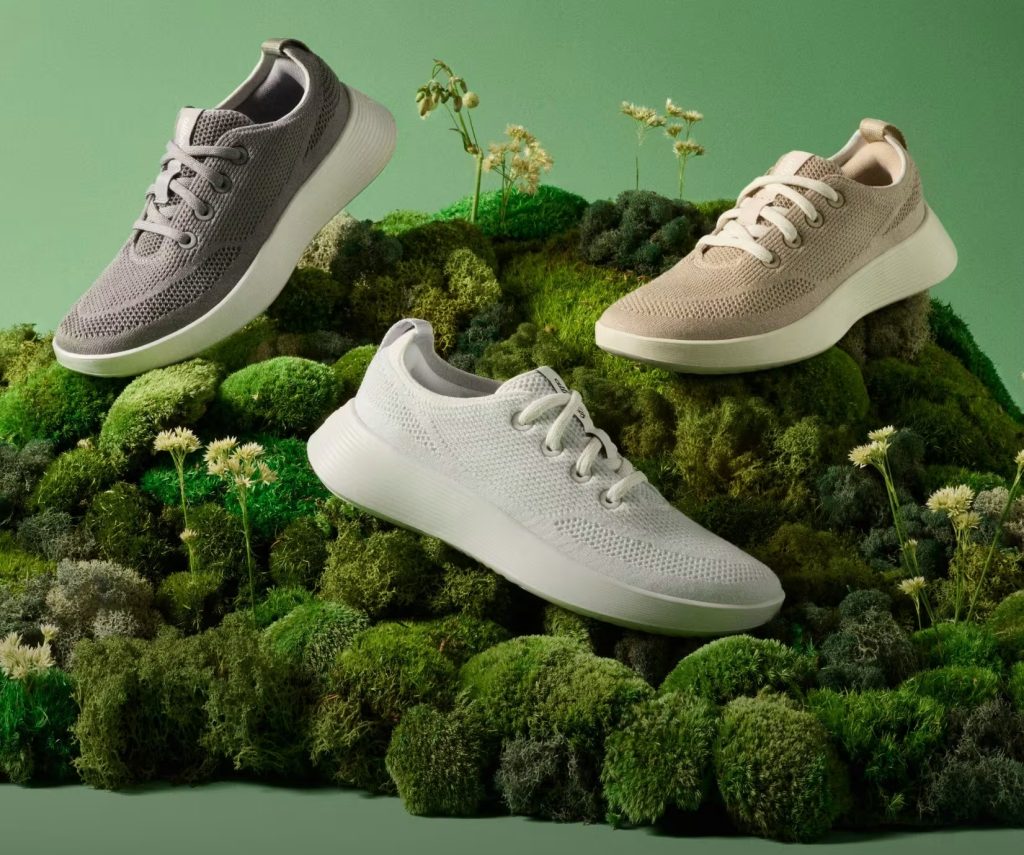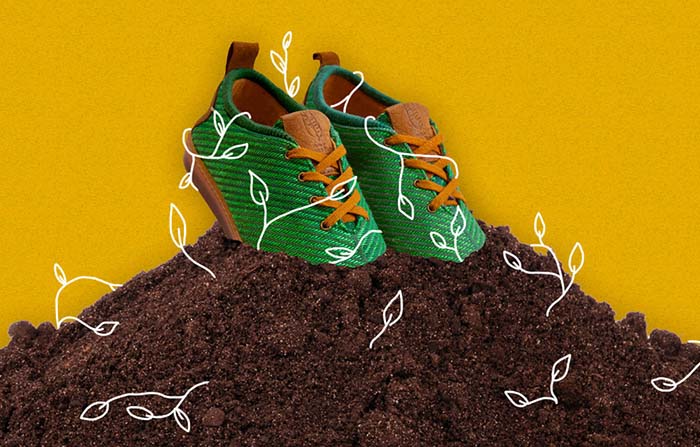Abril, 2024
Some people pay to wear a logo, but... Have you ever thought of paying to save the planet? Biodegradable shoes are here to revolutionize fashion, fusing style, comfort and sustainability.
Want to find out how?
Discover how these innovative shoes are helping to save the planet while keeping you fashionable. Get ready to explore the fascinating world of biodegradable footwear and learn why they are the perfect choice for our closet. Let's walk towards a greener, more sustainable future together!
What's Biodegradable Footwear?
Biodegradable footwear is designed to decompose naturally at the end of its useful life, minimizing its environmental impact.
Unlike conventional shoes, which can take hundreds of years to decompose, biodegradable shoes are made from materials that decompose more quickly and more safely for the environment.
Materials Used
Common materials in biodegradable footwear include:
- Organic cotton: Grown without pesticides or chemical fertilizers, organic cotton is a more sustainable alternative to conventional cotton. Its production uses less water and generates less pollution.
Benefits: biodegradable, soft, hypoallergenic.
Disadvantages: it can be more expensive than conventional cotton due to sustainable cultivation methods.
- Hemp: Hemp is a fast-growing plant that requires little water and almost no pesticides. It is extremely hardy and durable.
Benefits: biodegradable, strong, resistant to mildew and UV rays.
Disadvantages: may be rougher to the touch, requiring appropriate processing techniques to soften it.
- Natural rubber: Derived from the sap of rubber trees, this material is renewable and biodegradable.
Benefits: flexible, resistant, good shock absorber.
Disadvantages: may degrade over time if exposed to certain extreme weather conditions.
- Recycled polyester: Made from recycled plastic bottles, this material helps reduce plastic waste.
Benefits: resistant, light, reuses plastic waste.
Disadvantages: it is not biodegradable, but is a better alternative to virgin polyester.
- Vegan skin: Alternatives to animal skin made from materials such as corn and apple.
Benefits: cruelty-free, less environmental impact than animal fur.
Disadvantages: may not be as durable as real leather, variability in quality depending on base material.
Environmental Benefits
- Waste Reduction: Biodegradable shoes decompose faster than conventional shoes, reducing the accumulation of waste in landfills. This is crucial, as the traditional footwear industry generates a large amount of non-biodegradable waste that persists in the environment for centuries.
- Lower Carbon Footprint: Using recycled and organic materials reduces the carbon emissions associated with footwear production. According to an MIT study, the production of a pair of sneakers generates approximately 13.6 kg of CO2, much of which comes from synthetic materials and manufacturing processes. Sustainable materials can significantly reduce this figure.
- Resource Conservation: Sustainable materials typically require less water and energy to produce. For example, hemp and organic cotton consume significantly less water compared to their conventional counterparts, helping to conserve this valuable resource.

Technology and Manufacturing Processes
The biodegradable shoe manufacturing process includes:
- Ecological Design: Designers and manufacturers focus on sustainability from the outset, selecting materials that are both durable and biodegradable. Eco-design focuses not only on material selection, but also on minimizing waste during the manufacturing process.
- Ethical Production: Factories that produce biodegradable footwear generally follow fair and sustainable labor practices. This includes ensuring safe working conditions and paying fair wages, which contributes to a fairer and more sustainable economy.
- Innovation in MaterialsCompanies such as Reebok are developing entirely new materials from plants, enabling the creation of footwear that is 100% biodegradable. These innovative materials are not only sustainable, but also offer new performance properties, such as increased flexibility and strength.
Examples and Featured Brands
- Reebok: With its [REE]GROW line, Reebok has launched shoes made with at least 50% plant-based components, including eucalyptus, natural rubber and algae. This line represents a significant effort to reduce the environmental impact of footwear production.
- Allbirds: Known for its sustainable materials such as merino wool and eucalyptus, Allbirds offers comfortable and eco-friendly shoes. In addition, the company is committed to being completely carbon neutral, offsetting all of its emissions through reforestation and renewable energy projects.
- Veja: Veja uses organic cotton, wild rubber from the Amazon and other eco-friendly materials to create modern and sustainable shoes. Veja is also transparent about its production practices and the social and environmental impact of its products.

Cost Comparison
Sustainable shoes can be more expensive at the initial point of purchase compared to conventional footwear. However, in the long run, these shoes can be more economical due to their durability and reduced need for replacement.
For example, although a pair of biodegradable shoes may cost $100 to $150, their extended life and reduced environmental impact may justify the initial investment.
In addition, as demand for sustainable products grows, production costs will decrease, making these products more accessible to a wider audience.
Challenges & Solutions
- Cost of Production: Sustainable materials and ethical manufacturing processes can be more expensive.
- Solution: Increasing demand for sustainable products can reduce costs through economies of scale. In addition, government subsidies and tax incentives can help companies absorb these additional costs.
- Durability: To ensure that biodegradable shoes are as durable as conventional shoes.
- Solution: Innovate in materials that are both durable and biodegradable, such as natural polymer blends. Continued research into sustainable materials can lead to discoveries that improve durability without compromising biodegradability.
- Consumer Perception: To convince consumers that sustainable products are as good as or better than conventional products.
- Solution: Marketing and education campaigns that highlight the benefits and quality of sustainable products. Companies can use customer testimonials and direct comparisons to demonstrate the quality and value of biodegradable shoes.
Conclusions
Biodegradable footwear represents a significant evolution toward more sustainable fashion. With benefits ranging from waste reduction to natural resource conservation, these shoes are setting new standards in the footwear industry. As more consumers and manufacturers adopt sustainable practices, the future of fashion will be brighter and more planet-friendly.
